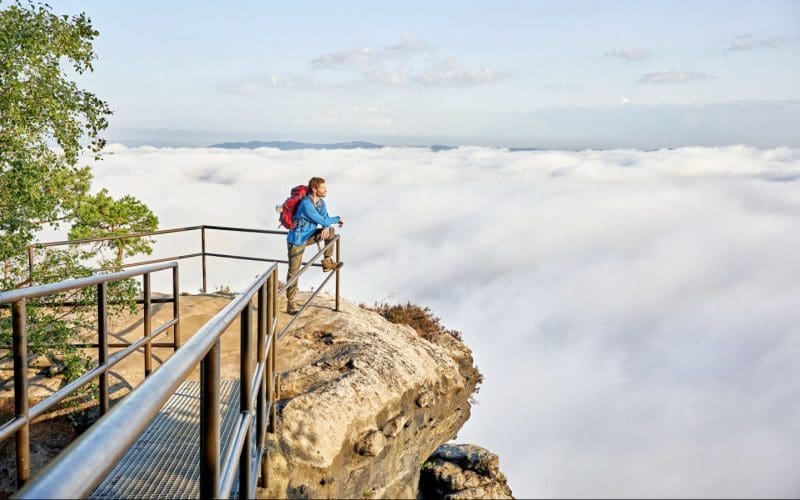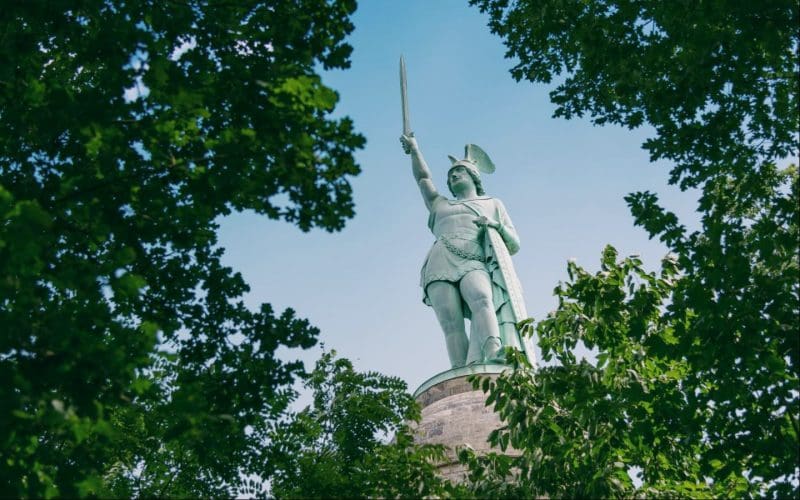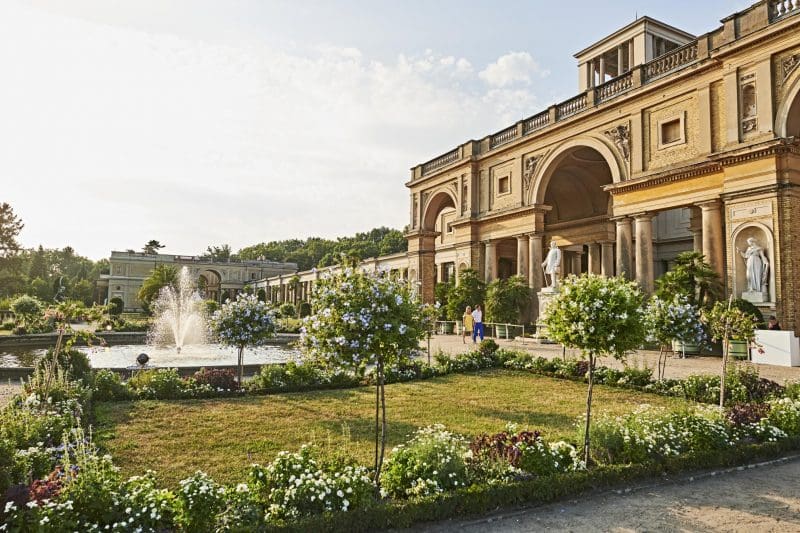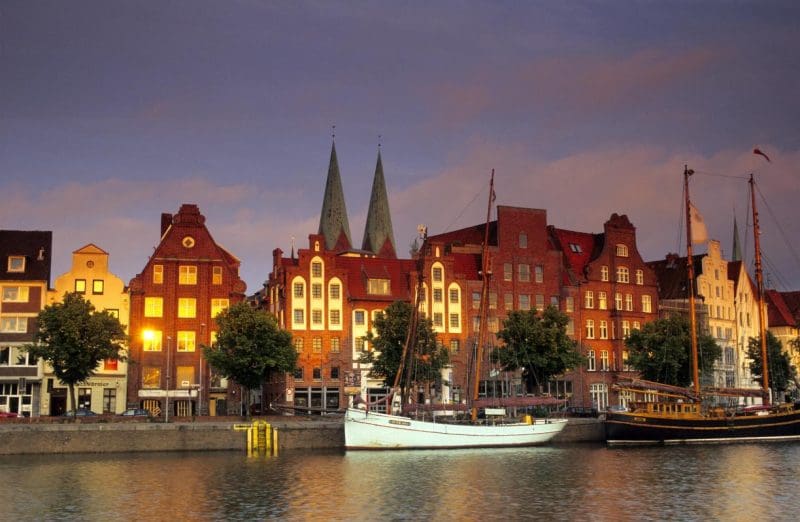Germany is ready to welcome back Canadian travellers
Anja Brokjans, the newly appointed director of the German National Tourist Office in Canada, dishes on her new role, the return of travel and some of the memorable sights – and meals – that await travellers.
Congratulations on your appointment as Director of German National Tourist Office in Canada. Can you share a few details about yourself and a fun fact that a lot of people don't know about you?
I feel very privileged to promote the country where I’ve lived for most of my life. I have been telling my Canadian friends how beautiful and interesting Germany is ever since I moved here five years ago. Now I have the opportunity to share this view with a much broader audience. Germany is one of the most popular international travel destinations.
I am looking forward to promoting Germany as a travel destination and communicating the diverse appeal of the country to the Canadian market. I want to speak about the beauty, diversity, romance and vibrancy of the country to people of all ages.
Previously I have worked in strategic communications, public relations and marketing in the trade show business in Germany and its subsidiaries in the U.S. and in Shanghai, China.
Just before joining the German National Tourist Office at VoX International, I was director of communications and marketing at Kleiser Media Inc, in Barrie, Ontario.
It is a funny coincidence I now live in Canada. I have a Masters Degree in Business from the University of Goettingen in Germany where I wrote my master thesis about Canada and NAFTA. At that time, I had no idea I would ever live here.

Anja Brokjans
After many months of travel restrictions as a result of the pandemic, Germany has reopened its borders and is ready to welcome international tourists once again and reclaim its position as a favourite travel destination. And Germany is well positioned to make up for lost time because it has, over the years, earned a well-deserved reputation as a trustworthy and popular host country.
Now that Europe is opening up again to international travellers, what’s important to know about travel to Germany?
After many months of travel restrictions as a result of the pandemic, Germany has reopened its borders and is ready to welcome international tourists once again and reclaim its position as a favourite travel destination. And Germany is well positioned to make up for lost time because it has, over the years, earned a well-deserved reputation as a trustworthy and popular host country.
All the service providers have worked very hard to earn that reputation – through professional safety measures, such as modern air purification systems, hygiene protocols, real-time visitor guidance, low-contact check-in and comprehensive digitization. The German government has lifted all entry restrictions for Canadian residents. And now, for entry by air, the requirements call for proof of testing, proof of recovery from COVID-19 or proof of vaccination.
All air travellers age six and older who are not fully vaccinated or fully recovered, must continue to present a negative COVID-19 test prior to departure. Both PCR tests and rapid antigen tests are accepted. The test is waived for fully vaccinated or recovered air travellers and they no longer have to present a negative test prior to departure.

Saxon Switzerland: Hiking in the Elbe Sandstone Mountains, Photo: GNTB/Jens Wegener
Do you have any insights to share on current trends, tourist arrival numbers, what’s popular, etc.?
We see a trend where visitors want to experience city tours to cities such as Berlin or Munich and at the same time also want to visit smaller and more intimate destinations in rural settings. And there is truly something for everyone as Germany offers a very diverse selection of towns and cities, top museums and many other cultural destinations. In addition, there is a big trend for nature and outdoor activities – hiking, biking, canoeing and exploring the great forests of Germany is very attractive to travellers.
We also see a trend towards longer stays and there is an increased demand for single destinations instead of multiple destinations. Visitors are increasingly travelling alone or as a couple rather than in larger travel groups. I also want to mention that Germany is not just a high season destination for Canadians but popular year-round with a strong shoulder season.

Allgäu: Cycle Loop, Photo: ADFC – DpR
For those who are looking to experience the great outdoors in Germany, can you share a few unique options?
There are a countless opportunities to experience nature and enjoy outdoor activities in Germany. With so many different natural highlights, Germany has a surprise around every corner.
Cycling has long been considered an insider’s tip for a fun and enjoyable holiday. If you cycle, you can enjoy, get to know the country and its people up close and get your exercise all at the same time. The whole of Germany beckons with wonderful routes – here are some insider tips.
This bicycle route (pictured above) has it all. On 250 kilometres between Lake Constance and the Allgäu in the south of Germany, you have to climb some 3,000 metres in altitude, but there are plenty of rewards in store for you. Exhausted cyclists can enjoy a dip in cool lakes or relax in one of the many spa towns with thermal baths along the route. In addition, magnificent natural vistas, historic old towns as well as monasteries, castles and palaces dot the landscape.

Teutoburg Forest, Felix Meyer
The towering Hermannsdenkmal (German for Hermann Monument) in the Teutoburg Forest was the end of the line for the Romans – they had to admit defeat to the Germanic tribes. It’s a different story for today’s cyclists: They start their journey in Detmold and embark on an enjoyable 6-day tour on the Römer-Lippe-Route all the way to Xanten. Only one climb – it leads to the mythical Externsteinen – requires vigorous pedalling. Otherwise, it’s almost 500 kilometres through the lowlands, following in the footsteps of the Romans through meadow and lake landscapes with exciting stops and original, hand-operated ferry crossings.

Potsdam: Orangerieschloss im Park Sanssouci, Photo: GNTB/Jens Wegener
Cycling to aristocratic residences and magnificent castles – that’s what the Märkische castles tour has to offer. The 180-kilometre tour takes you past 11 architectural treasures in beautiful parks or along magnificent avenues where the lords of the castles used to travel in their carriages. The Lake District Oder-Spree Cycling Region is a cyclists’ paradise in Brandenburg and offers 10 designated tours through this romantic landscape east of Berlin.
Experience National Parks
Nature is king – protected from development the extensive landscapes of the 16 national parks puts on a stunning show and allows you to experience unspoiled countryside and an amazing diversity of flora and fauna. This is where you can discover the power of the natural world.

Dagebuell: Woman and mudflat guide walking in the Wadden Sea, Photo: GNTB/Julia Nimke
The Schleswig-Holstein Wadden Sea National Park is part of the Wadden Sea UNESCO World Heritage Site and the largest continuous area of mudflats in the world. It never fails to amaze visitors with its magnificent sand dunes, beaches and charming animal residents.
This remarkable national park, which also doubles up as a UNESCO Biosphere Reserve, in Germany’s northernmost state of Schleswig-Holstein, offers plenty of opportunity for adventure and exploration. Visitors can take walks through the salt marshes and admire the coastal setting as they watch out for birds whilst on a bike ride. The small inhabited Halligen islands in the middle of the mudflats are just a boat ride away. And, with a bit of luck, visitors may be able to catch a glimpse of some common seals, grey seals or porpoises. A walk along the mudflats with an expert tour guide is a must and a great way of getting to know tiny locals, such as starfish, snails, mussels and lugworms.

Sylt: Lighthouse List-Ost behind the dunes at the beach, Photo: GNTB/Francesco Carovillano
Germany’s islands
Despite the enormous diversity of Germany’s islands, they all have one thing in common: they inspire happiness in their visitors. Tranquil havens of natural beauty, family-friendly holiday destinations or places to experience great food and drink and life with a maritime twist.
The largest of the North Frisian Islands is a popular destination among foodies and water sports fans. Located just off Schleswig-Holstein’s North Sea coast, Sylt has plenty to offer holidaymakers with wellness on their mind.
When you picture Sylt, imagine some 40 kilometres of sandy beaches to the west, the vast Wadden Sea to the east and vibrant spa resorts, such as Westerland and Wenningstedt, boasting no end of wellness treatments. This ‘Queen of the North Sea’ in the Schleswig-Holstein Wadden Sea National Park covers 99 square kilometres, making it Germany’s fourth largest island. The Hindenburg Dam causeway provides direct links to the mainland by car or train. Sailors (including some international pros) and golfers are just as keen to visit Sylt as nature lovers, who are sure to revel in the fact that half of all of the island’s land is registered as a protected area. Foodies and night owls will also love all that Sylt has to offer.

Hanseatic Lübeck: Old town and Trave river at sunset, Photo: Lookphotos/H & D Zielske
In your opinion, what’s something a traveller shouldn’t leave Germany without seeing, doing and eating?
Germany is full of wonderful culture that just wants to be discovered.
The “Historic Highlights of Germany” are 17 cities combining historical heritage with modern urban lifestyles, each making its own specific contribution to culture, business and science.
There’s something special about the places where German wines are made. Pampered by the climate, noble vines feel at home in the rich soils of the 13 wine-growing regions.

Freyburg: Vineyards in the wine-growing area Saale-Unstrut, Photo: DWI – German Wine Institute
Do you have anything to add?
German bread and baked goods are something I personally miss the most. The bread and baking traditions of Germany have been shaped by the geography and climate of the individual regions, as well as by the country’s history. From the famous soft pretzels to nutritious wholemeal and rye-wheat bread all the way to rusks and pumpernickel, Germany has bread to suit every taste. It is produced using a wide variety of grains – chief among them wheat, rye and spelt – and methods handed down through the generations. Those who prefer their baked goods somewhat sweeter are also spoiled for choice, with Hamburg’s Franzbrötchen pastries, Berlin’s doughnuts and the internationally acclaimed Stollen cake from Dresden just some examples of what’s on offer.

Bakery Schmitt, Bread & Wine Seminar, Photo: Because You Are Hungry/Benedikt Steinle & Antonia Kögl

















